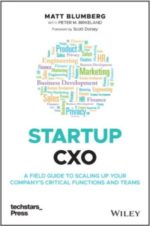Reverse Engineering Venture Economics
Reverse Engineering Venture Economics
First, they receive a small percentage of their fund as an annual management fee to pay basic operating expenses. These fees range in size, but a typical one is 2% per year. So on the $100 million fund, the GPs will take $2 million per year to pay their salaries, staff, and office expenses.
Second, they receive a percentage of what’s called the carry, or the profits from their investments. Carry percentages have a range as well, but again a typical one is 20%. Here’s where the math starts to get interesting.
Let’s say the GPs invest $4 million in your company at a $12 million pre-money valuation, so they buy 1/4 of the company. You end up selling the company for $40 million a couple years later without taking in additional capital (good for you!), so their 1/4 stake in the company is now worth $10 million. They’ve made a 2.5x return on their invested capital, bringing back a profit of $6 million to their LPs, and they’re entitled to keep 20% of it, or $1.2 million, for themselves.
Fred Wilson talks about the rule of 1/3 in Valuation, where, from a VC’s perspective, 1/3 of deals go really well, 1/3 go sideways (he defines sideways as a 1x-2x return), and 1/3 go badly and they lose most or all of their money.
So based on this rule, let’s say a "good" VC will generate an average return of 2.5x on their LPs’ money over a 5-year period (an IRR of 20%). Now let’s say on average, the GPs make 22 investments of $4 million each to fill out their $100 million fund (less the $10-12 million spent on management fees over the life of the fund), and, again on average, each returns 2.5x (recognizing that many will return zero and a few will return 10x). The VCs will have returned $220 million to their LPs on $100 million invested, for a gain of $120 million (good for them!). The GPs get to keep 20% of that, or $24 million, to split among themselves. Not a bad bonus, on top of their salaries, for 5 years of work across a small number of partners and associates.
Let’s attempt now to compare those earnings to the earnings of an entrepreneur, assuming equal annual cash compensation. An average entrepreneur of a venture-funded company probably owns somewhere between 5-10% of the company by the time the company is sold. In this same average case above, the company is sold for $40 million, so the entrepreneur’s equity will be worth between $2 and $4 million for the same 5 years of work. In this simple case, the GPs in the venture firm have earned a collective $1.2 million, much less on a per-person basis than the entrepreneur. However, in the 5 year period of time where the entrepreneur is working solely on one business, the GPs are working on 25 businesses, earning a collective $30 million. A senior partner in a small firm will end up with $10-12 million. A junior partner maybe more like $2-4 million, comparable to the entrepreneur. However, and this is an important point, most entrepreneurs probably operate at the "seinor partner" level.
So on average, I think the economics probably work out in favor of VCs over entrepreneurs in the long run, mostly because VCs operate a diversified portfolio of companies and entrepreneurs are putting all their eggs in one basket. But on any given deal, I’d rather be the entrepreneur any day of the week – you have more control over value creation, and more of a personal win if things go well. And in the 1/3 of deals that are home runs for the VC, it’s better to be the entrepreneur, since you’re much further along the risk/reward curve and have that chance of seeing your equity turn into $20 million or more in that one shot.
For Whom the Bell Tolls, Part II
For Whom the Bell Tolls, Part II
Great news for fans of Vonage and other Voice over Internet Protocol (VOIP) services. Today, the The Wall Street Journal (that link may only work for a week or so) reported that FCC Chairman Michael Powell just drove a successful vote to declare VOIP an interstate service, exempt from state regulation and really paving the way for much smoother and broader adoption.
I’ve received a number of comments on my earlier posting which sang the praises of Vonage and VOIP, and apparently not everyone has had the same positive experience as we’ve had with the service. But it’s still going strong for us!
Gmail – I Don’t Get It, Part II
Gmail – I Don’t Get It, Part II
Back in June, I blogged about Google’s new Gmail service, how I didn’t understand the fuss, and how its features would ultimately be replicated and true usership stalled at a couple million. I stand by those assertions (just look at what Yahoo, Hotmail, and Lookout have done to the landscape since then), but my company Return Path published some data today that’s interesting on this topic.
We run the largest Email Forwarding and Email Change of Address service around, so our data on email switching is pretty solid — we’ve had about 16 million consumers register a change of email with us in total, and about 25,000 new ones come in every single day to report a new ISP. So our numbers are probably pretty good relative to each other (ISP to ISP or month to month at the same ISP), but they’re certainly not meant to be correct on an absolute basis.
– In July, we saw 375 people join Gmail, in August, 802, and in September, 2,396. To put these numbers in context, we see 50,000-100,000 new users every month at Hotmail and Yahoo, and even 5,000-15,000 new users every month at smaller ISPs like AOL, Earthlink, Comcast, and Roadrunner. These numbers are obviously on the rise, but they’re still pretty small. In all fairness, though, G-mail is still invitation-only, at least in theory.
– Gmail is mainly stealing share from Hotmail and Yahoo, twice as rapidly from Hotmail as from Yahoo — and twice as rapidly from Yahoo as from AOL.
Read the full article in eMarketer here.
After I saw the article this morning, I asked my colleagues Jack Sinclair and Jennifer Wilson to tell me how many people we saw leaving Gmail every month, an interesting metric to offset the one most people are interested in covering. The answer at this point is also revealing. While we recorded 2,396 new Gmail users in September, we also recorded 741 people leaving Gmail in the same month. That’s a sign to me that a lot of people are trying it out to see what the buzz is all about, but many are quickly switching back after a little experimentation.
And yes, we also took a look at how many people are leaving Yahoo, Hotmail, and AOL every month relative to the number of people joining those services. Hotmail and Yahoo do a lot of treading water (lots of people leaving, lots of people joining), but let’s just say I wouldn’t want to be the guy in charge of AOL subscriptions these days.
Caught In Their Own Underwear
Caught In Their Own Underwear
This is, as Brad says, priceless. According to PC World, verification emails sent by the challenge/response anti-spam technology from Mailblocks, Inc., which is now owned by AOL, are being blocked by…you guessed it, AOL (and Earthlink, too). Read the full article here.
This is a little embarrassing for AOL, but it really underscores the continuing problem in the world of email, spam, and anti-spam systems: false positives. It’s almost impossible, with the moving targets of technology, consumer complaints, and aggressive spammers, to get filtering right 100% of the time. We all know the multi-faceted solution is out there somewhere (authentication, reputation, monitoring, improving permission and mailing practices, legislation and enforcement, etc.), but the industry hasn’t nailed it yet. Stay tuned!
We Did What?
We Did What?
Newsgator founder Greg Reinacker has a pricelss posting about the first time an entrepreneur discovers that something happened in his company that he didn’t know about. An absolute gem.
For Whom the Bell Tolls
For Whom the Bell Tolls
I don’t understand why everyone in the world hasn’t yet signed up for VOIP services from companies like Vonage. We just did it a couple of weeks ago at home. In terms of quality, it’s virually indistinguidhable from a POTS land line. You can have as many numbers as you want on the same account. TiVo works with it. You can keep your old phone number. There are no minimums and no contracts. They don’t have to come to your house to get it to work. They’ve even figured out how to get 911 and 311 to work with it.
It’s got tons of other cool features, as well, but even if all you do with it is use it like your old phone or fax line, all it costs is $15/month with a $40 startup cost for 500 minutes/month (they also have $25/month for unlimited calling). I hate to sound like an ad for the thing, but it’s just a better way of having a phone at home. The only real risk is an outage with your cable modem, and while that does happen from time to time, most people now have cell phones as a backup, and if your modem is out, calls go straight into voicemail.
We’ve had one or two phone lines at home forever and bounced around over the years from Verizon to Sprint to AT&T depending on who had the best deal of the month. No matter which carrier we’ve used, we don’t use our home phone that much, and we’ve always paid between $50-100/month per line for the privilige. No longer!
Anyway, I don’t know much about Vonage, and they may have tons of competitors. From a business perspective, then, I don’t know who is going to win this war…but as my board member Greg Sands says, I certainly know who’s going to lose it. I wouldn’t want to be a big old phone company today!
Why is Seth Godin so Grumpy?
Why is Seth Godin so Grumpy?
Permission marketing guru Seth Godin says we should all Beware the CEO blog. His logic? Blogs should have six characteristics: Candor, Urgency, Timeliness, Pithiness, Controversy, and maybe Utility — and apparently in his book, CEOs don’t possess those characteristics.
Certainly, CEOs who view blogs as a promotional tool are wasting their time, or are at least missing a fundamental understanding about the power of blogs and interactivity.
But many of the ones I read (and the one I write) do their best to be anything but promotional. One of my colleagues here describes my blog as “a peek inside the CEO’s head,” which is a great way of putting it. And I still stand by my earlier posting about the value of the blog to me and to the company — hardly “annual report fluff.”
How’s that for honest, timely, controversial, and pithy, Seth?
Everyone's a Marketer, Part I
Everyone’s a Marketer, Part I
While there’s a specific marketing department at most companies, I think in today’s inter-connected, service-oriented business, everyone in the company is a marketer. Ok, it’s probably more true in some industries than others, but consider these pockets of marketing activity from non-sales/marketing personnel:
– Our front line customer service manager, Anthony, is on the phone with hundreds of customers each week answering questions about their email subscriptions or helping them unsubscribe. His mission? Make sure they understand our services and try to get as many of them as possible to stay on with us.
– Our client data coordinators Jeremy and Tom talk and email with clients regularly as we send data back and forth for processing. They have an ever-present opportunity to ask clients for more data, to talk to them about their email programs, to give them advice or help on their business.
– Any receptionist greets people every day on the phone and in person. How many of those people’s first impressions of your company come from this individual? How many of those who call or stop by are customers or potential customers?
– Our database administrator Kevin and our head of product management and quality assurance Dan talk to customers about their needs for reporting, or for custom functionality, not just trying to get the answer but trying to understand the business drivers behind the needs and think about the implications of those needs for other customers.
– Any hiring manager or recruiter is doing screening interviews with candidates for a new position. One of those candidates will end up as the “chosen one” — meaning our recruiter has to be selling that person (and therefore all candidates since the winner is unknown at the outset) on how great our company is from first contact.
– Our accounting team Liz and Paul call clients when they have overdue bills. Getting this right is a true art form — it’s tough to simultaneously be The Enforcer and also express appreciation for the customer’s business.
All of these things sound distinctly like marketing to me. So, with all of this non-marketing marketing going on, what should a smart company do? Weave the work of the marketing department into the daily lives of all employees: make sure everyone knows core messaging and value propositions, teach everyone to think like a marketer, provide easy mechanisms for people to report market feedback and needs into the marketing department.
We don’t do nearly enough of this at Return Path, but we have it as a goal to improve on these things.
Next up in this series: marketing yourself.
The Bush Dilemma
The Bush Dilemma
I think I’ve finally articulated The Bush Dilemma that I am having as a moderate Republican with the upcoming election. Here was my dialog with Fred, an ardent but utterly rational Democrat, the other night at dinner.
Matt: Kerry is clearly a much smarter person than Bush, but I tend to agree with Bush’s philosophy and positions on more issues than I do Kerry’s.
Fred: If you agree with him on the top 10 issues, then you should vote for him.
Matt: I agree with him on most of MY top 10 issues…but not on most of HIS top 10 issues.
Fred: That’s a dilemma.
I suspect many other moderate Republicans have this same dilemma. Whether they will vote for Kerry, not vote, or “hold their nose and vote for Bush” may determine the outcome on November 2.
Giving Away State Secrets
Giving Away State Secrets
Ed Daciuk, one of my subscribers, questions me:
“I am wondering how a CEO who blogs balances the disparate goals of giving enough insight to be interesting but not give away trade secrets like positioning or financial drivers.”
Good question, and one that I thought about along with my prior posting. It’s a tough balance sometimes, but the goal is to stimulate thinking and communicate in broad strokes more than it is to detail things out, especially with non-public information.
So for example, in the prior posting, I didn’t mention the client’s name, industry, or location; the data was close but not exact; and I refrained from discussing some of Return Path’s efforts to solve this problem for clients. Despite those maskings, hopefully it was still an interesting posting with a couple of useful themes for marketers to stimulate their thinking.
Why Email Will Win the Day
Why Email Will Win the Day
I attended the same presentation as Fred where a great B2C marketer talked about how she got a 40:1 payback for every dollar spent on email marketing versus an 8:1 payback on search. As head of an email marketing company, it was music to my ears.
But the “finite issue” Fred highlights is actually a great opportunity more than it is a drawback. Most marketers still have email addresses for less than 25% of their full customer database, meaning that if we do our job as an industry, we should be able to increase the availability of email addresses threefold in the coming couple of years. With the inevitable scale efficiencies in email marketing, that 40:1 number can become much bigger, maybe even as high as 100:1, over time.
The challenge for the industry is that this kind of transformation isn’t easy. A lot of the low-hanging fruit of early online adopters is gone. This means marketers are going to have to do more to embrace permission and drive organic list growth if they want to keep pushing the email ROI metric forward. Not necessarily brain bending stuff, but there aren’t a lot of shortcuts for it, either, and it requires a different mindset than traditional advertising and direct marketing. In the end, it all comes down to respecting the consumer and delivering the value exchange to customers.



